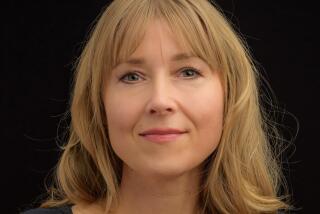Sarah Stillman will use her MacArthur to support her long-form journalism
Sarah Stillman has been named a MacArthur Foundation fellow for her long-form investigative journalism which explores issues of social justice in oft-overlooked communities. A staff writer at the New Yorker who has written about immigrant children being kidnapped near the U.S.-Mexico border, low-wage workers on U.S. bases in Afghanistan, and civil asset forfeiture in America, Stillman turns up fascinating stories while tackling difficult subjects. We talked to her about the MacArthur and what it means for her work.
Has the fellowship news sunk in yet? Has it allowed you to think about your work in a different way?
I was completely flabbergasted and shocked when I got the news, and am still processing it. I was pretty sure that I must have misunderstood when they first called — it’s such a tremendous honor, and a huge surprise.
It’s certainly given me some time to reflect on the gift and privilege on getting to do long-form, deep-dive investigative work, and to feel a sense that I can be more courageous as I think about projects in the future that will take investing in uncertainty, in projects where you can’t necessarily see the logical end. Because I think part of what’s so complex about these stories is they’re investigative precisely because they’re not there on the surface and it takes some digging, some confusion and some wandering to find them.
Does the MacArthur play into allowing you to do stories that don’t sound glamorous in a pitch?
I think the MacArthur is a tremendous opportunity to invest in stories that might not be conventionally commercially marketable, but I’ve come to learn readers really have a hunger for. Which is, stories that are in the public interest, stories that are about connecting individual social problems with systemic structural issues. I think that’s particularly true in the realm of criminal justice and mass incarceration. I think there’s so many stories that, when explored as an isolated incident, may not strike a given reader as a crisis, but explored in context, when you’re connecting the dots and when you’re putting together how a lot of individual people’s stories relate to each other and to fundamental holes in our public policy, I think that’s where there’s room for work to be done. And I think that’s one of many gifts of the MacArthur — the chance to continue working on stories that might not have that glossy appeal but that meet a real public need. And I think sometimes when you hear people talking about stories in the public good, it’s talked about as eat-your-vegetables journalism, and one of the things I’ve learned in the past few years is that we underestimate the degree to which readers really do care about issues when they’re given a chance to invest deeply in them. That’s one of the rare things that long-form journalism can do that quick-hit journalism can’t, is to get readers deeply invested in human beings.
I’m very interested in the relationship between storytelling and empathy, and how we can get people to feel invested in and to care about and to publicly debate things that they might not immediately think that they do care about. I think one of the ways that we do that is to get them to invest in a narrative when they put themselves in another person’s shoes.
I’m less interested in individual bad actor/bad apple stories, and more interested in stories that allow us to understand the structural elements at play that allow things to unfold the way they did. We have a tendency to look for stories that allow us to say, Wow, this incredibly messed up thing happened in this or that place. One of the things I’m trying to do in my work is say it’s not just a story of one bad cop in Florida that allowed this confidential informant to be killed; it’s actually a thing that’s happening in Detroit, Mich., and a small town in Kentucky and in Washington state, and to thread all those together in a way that reveals much more than any one individual.
Are there any fellows whose work you know?
I’m a huge admirer of Ta-Nehisi Coates; I’m a huge admirer of David Finkel. LaToya Ruby Frazier. Lin-Manuel Miranda! It feels like the whole crew of people to be affiliated with them in any way is a shock and an enormous honor.

Journalism is often about facts. When and how did empathy become a focus?
I think I was really influenced by studying anthropology and ethnography. So much of the framework of ethnography is the idea that you can’t just parachute in somewhere for a few days or even a week and presume to have a sense of someone else’s lived experience. You start with time, and also the physiological experience of walking alongside someone, see what it’s like to walk with their kids to school or to go to the doctor’s appointment with them. To go through both the minutiae of the everyday, and also in some cases in the kind of work I do, the grave, significant moments in their life. I think a lot of conventional reporting trains us to only look at the crisis moments — one of the things ethnography trains to you to look at the everyday, to think of it as every bit as revealing of the human situation.
What’s the through line you see in your work?
One has been an interest in looking at how introducing profit motives to fundamental public services has created a range of complex problems, and often troubling outcomes. I looked at that in the context of criminal justice and the return of debtors’ prisons; in the privatization of probation; in Iraq and Afghanistan, in the context of subcontracting crucial logistics work of the wars; and I looked at that in the context of young people used as informants in the war on drugs, who were essentially doing the outsourced work of police. I think that, in many respects, is a theme of a lot of the work I do.
2016 MacArthur fellows:
More to Read
Sign up for our Book Club newsletter
Get the latest news, events and more from the Los Angeles Times Book Club, and help us get L.A. reading and talking.
You may occasionally receive promotional content from the Los Angeles Times.







